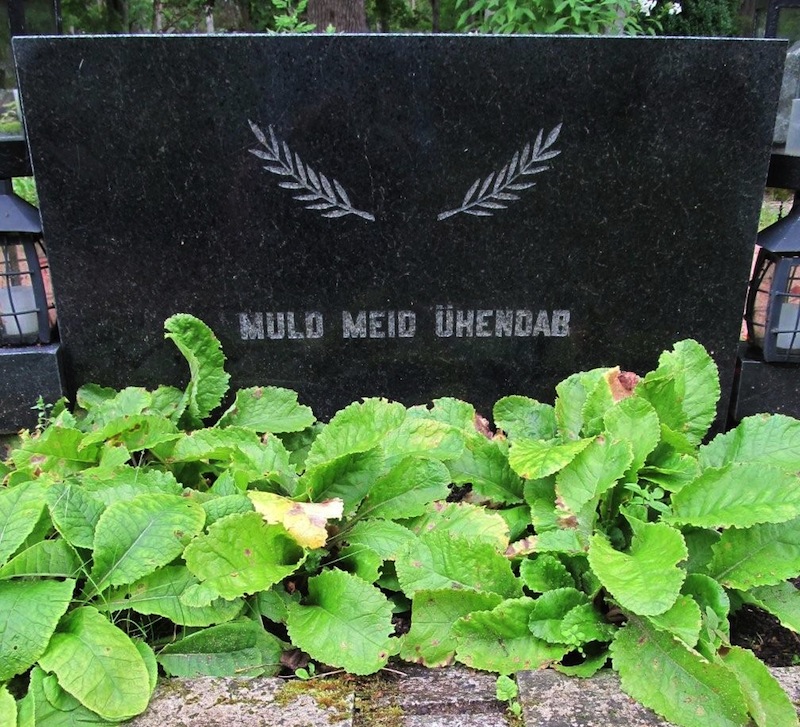My favourites are the more placid mixes: porgandi-õuna (carrot + apple) and peedi-tsitruse (beet-citrus) juices. The latter especially would rock the world of non-believers, since it does not taste overly mullane (earthy) thanks to added õuna, mandariini, laimi and sidruni juices. It's actually quite amusing how an urbanite feels so proud for having chosen ,33 litres of the same whole food most elderly rural people survive on every day out of necessity. And that's not to say they don't enjoy it. They can't even imagine the depraved things we store-spoiled people crave to ingest…
“100 & mushrooms”
I've never actually heard anyone ask for “sada ja seened” (“one hundred and mushrooms”), but then again I'm not exactly a barfly. It may be a common order in Russian bars, where munching something savoury such as marinated mushrooms, pickles or herring helps temper the slap of the viin (vodka). Sada (100) refers to the number of grams of viin. The snacks served with valge viin (literally “white alcohol”) are called sakuska, a word of Russian origin. By the way, if someone says “võtame valget” (let's have some white), they're not talking prosecco and if you hear “viskame viina”, it's not Jägermeister or any other kind of alcohol, but the one true ancient original clear made-of-potato stuff. I find it funny when I hear Estonians calling viin “vodka”. The name hasn't changed; vodka's just been put on the bottles for the sake of foreigners. And is of Russian origin.
I broke tradition and dove into the pot of kuuseriisikad (seen above) sipping another white – South African Chenin Blanc. (Truth be told, it's a karbi/vein, i.e. bag-in-box.) But why am I talking about white, when today's inspiration is the blacker than black (mustem kui must), the slimier than slime (limasem kui lima), the mouldier than mould (hallitus). (“Hallitus” means government in Finnish by the way!)
There are mushroom people and then there are those that aren't. For many, there is only one kind of mushroom, the one Estonians call šampinjon that is sold world-wide. I know a 23-year-old American-Estonian girl who went seenele (mushrooming) for the first time in her life just a few weeks ago near Tartu and my hours clocked-in with a korv (basket) and nuga (knife) are quite minuscule as well. The enduring use of Latin names or silly long ones like false saffron milk-cap are proof of seened not being part of everyday conversation in many cultures.
Cultivated “button” mushrooms are tame, shiitake, portobello and oyster (auster/servik) mushrooms are definitely a welcome addition to produce sections and orange kukeseened (chanterelles) are like a dream, but not nearly as punchy and piquant as many other wild varieties. I had to broaden my horizons and get over my aversion to (what I associated with) lima and kõdu (slime and decay), that's why I bought the marineeritud kuuseriisikad.
 My friend Kairi who hails from Tallinn but has lived and worked in Luxembourg for the past 6 years, admitted to being addicted to said marinated fungi (both kuuse- (spruce) and männi- (pine) riisikad). At 3,39 euros (almost $4) for 450 grams, I suppose many would think it's luxurious food fit for only a translator earning Euroopa Komisjoni wages. It's Kairi's secret pahe (vice). She eats them straight from the container. And when I tried them at her place recently I quickly got over my perceived problem.
My friend Kairi who hails from Tallinn but has lived and worked in Luxembourg for the past 6 years, admitted to being addicted to said marinated fungi (both kuuse- (spruce) and männi- (pine) riisikad). At 3,39 euros (almost $4) for 450 grams, I suppose many would think it's luxurious food fit for only a translator earning Euroopa Komisjoni wages. It's Kairi's secret pahe (vice). She eats them straight from the container. And when I tried them at her place recently I quickly got over my perceived problem.
The first word I would use to describe them is nutty, almost like muskaat/pähkel (nutmeg). Perhaps even gingerbread-like spicy. Musky. Woodsy (of course), sour and suitsune (smokey) in one big, long parade. Just as I was getting into it and slurping out of the container in a way Kairi would be proud to witness, I came upon a specimen I was reluctant to approach simply because it looked too robust, its meat too dark and sinister, its gills too… ancient looking. It actually resembled a chunk of wood that had flown out from under the blow of someone's kirves (axe) ages ago and was now darkened by rain and moose pee. It could've been a black seashell or a kotlet – a hamburger patty.
I made like the Hobbit (Kääbik in Estonian) and sliced up my steak of mushrooms, remembering what a fan of lima and kõdu I really am in essence. I hesitate to use the f-word (that being fall), but the time of lima and kõdu in nature with all its wonderful smells of decay and earth is fast approaching, so we best get used to it. And admittedly, it's a glorious bouquet.
Riina Kindlam




